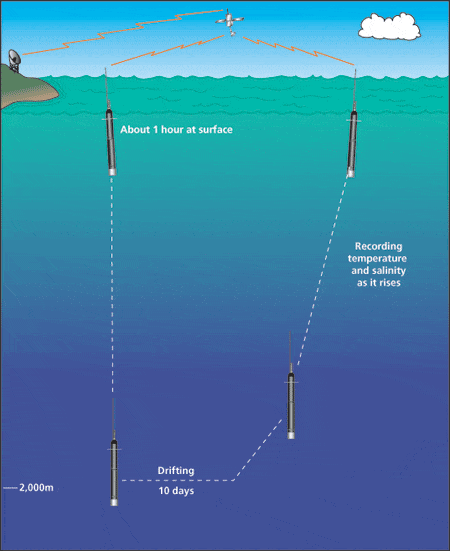Fleet of Ocean Observers Grows to 3,000 Strong
October 1, 2007
The oldest method for studying ocean circulation is to drop something into the water and let it float wherever it may go. For the past decade, oceanographers have given that approach a high-tech boost with the Argo global array of profiling floats. On November 1, researchers from WHOI, the Scripps Institution of Oceanography, the National Oceanic and Atmospheric Administration, and the University of Washington as well as collaborators from 22 other nations will celebrate the deployment of the 3,000th operational float and the completion of the Argo armada.
Argo floats are built to rise and fall vertically through the top 2,000 meters of the water column, using simple mechanical pumps, bladders, and other devices to change their buoyancy. These instrumented cylinders measure water temperature, depth, and salinity as they also move horizontally with ocean currents, traveling long distances without the need of a ship, person, or propeller. Floats are programmed to rise to the surface periodically in order to note their position (via the Global Positioning System) and send data via satellite antenna to scientists on shore.
Discussions of a global Argo array started in November 1997, and the first instruments went into the water in 2000. These simple, floating observatories play a critical role in measuring the fine details of ocean dynamics from the direction and speed of currents and eddies to the characteristics of parcels of water within the ocean. Data from the floats are helping scientists examine parts of the ocean that have scarcely been sampled in the past, while adding great depth and breadth to models that previously relied on a handful of data points.
Related Links

